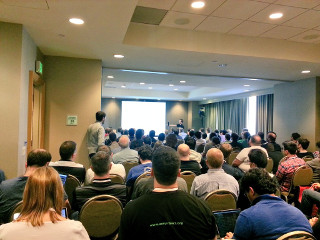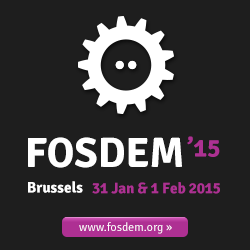At Bootlin, we are starting to get more and more requests for very cool projects. As it can be very frustrating to turn down very interesting opportunities (such as projects that allow us to contribute to the Linux kernel, Buildroot or Yocto Projects), we have decided to look for new engineers to join our technical team.
Job description in a nutshell
- Technical aspects: mainline Linux kernel development, Linux BSP and embedded Linux system integration, technical training
- Location: working in one of our offices in France (Toulouse or Orange)
- Contract: full-time, permanent French contract
Mainline Linux kernel development
Believe it or not, we now have an increasing number of customers contracting us to support their hardware in the mainline Linux kernel. They are either System on Chip manufacturers or systems makers, who now understand the strong advantages brought by mainline Linux kernel support to their customers and to themselves.
You can see the results: Bootlin is now consistently in the top 20 companies contributing to the Linux kernel. We are even number 6 for Linux 4.0!
Note that this job doesn’t only require technical skills. It also has a strong social dimension, having to go through multiple iterations with the community and with kernel subsystem maintainers to get your code accepted upstream.
Linux BSP and embedded Linux system integration
Such activity involves developing and integrating everything that’s needed to deploy Linux on the customer hardware: bootloader, kernel, build environment (such as Buildroot or the Yocto project), upgrade system, optimizing performance (such as boot time) and fixing issues. Another way is to provide guidance and support to customer learning to do such a job.
As opposed to Linux kernel development projects which are often long term ones (though with step by step objectives which can be reached in days), these are usually shorter and more challenging projects. They allow us to stay in touch with the real-life challenges that customer engineers face every day, and that require to achieve substantial results in a relatively small number of days.
Such projects also constitute opportunities to contribute improvements to the mainline kernel and bootloader projects, as well to the build system projects themselves (Buildroot, Yocto Project, OpenWRT…).
Training and sharing experience
Knowledge sharing is an important part of Bootlin mission and activity. Hence, after gaining sufficient on-the-job experience, another important aspect of the job is teaching, maintaining and improving Bootlin training courses.
You will also be strongly incited to share your technical experience by writing blog posts or kernel documentation, and by proposing talks at international conferences, especially the Embedded Linux Conference (USA, Europe).
Profile
- Experience: we are open to both experienced engineers and people just out of engineering schools. Though prior experience with the technical topics will be an advantage, we are also interested in young engineers demonstrating great potential for learning, coding and knowledge sharing. People having made visible contributions in these areas will have an advantage too.
- Language skills: fluency in oral and written English is very important. French speaking skills won’t be a requirement, but an advantage too.
- Traveling: for training sessions and conference participation, you will need the ability to travel rather frequently, up to 8-10 times a year.
- Ability to relocate, to one of our offices in France, either in Toulouse or in Orange, to strengthen our engineering teams here.
Details about Toulouse and Orange
- Toulouse is a dynamic city with lots of high-tech and embedded systems companies in particular. Our office in Colomiers can easily be reached by train from downtown Toulouse if you wish to settle there. You would be working with Boris Brezillon, Antoine Ténart, Maxime Ripard and our CTO Thomas Petazzoni.
- Our main office is settled in Orange in the heart of the Provence region, close to Avignon, a smaller but dynamic city too. It enjoys a sunny climate and the proximity of the Alps and the Mediterranean sea. Accommodation is very affordable and there are no traffic issues! You would be working with our founder Michael Opdenacker and of course remotely with the rest of the engineering team. In particular, we are interested in foreign engineers who could help us develop our services in their home countries.
We prefer not to offer home based positions for the moment, which have their own complexity and cost, while we have plenty of space left in our current offices.











